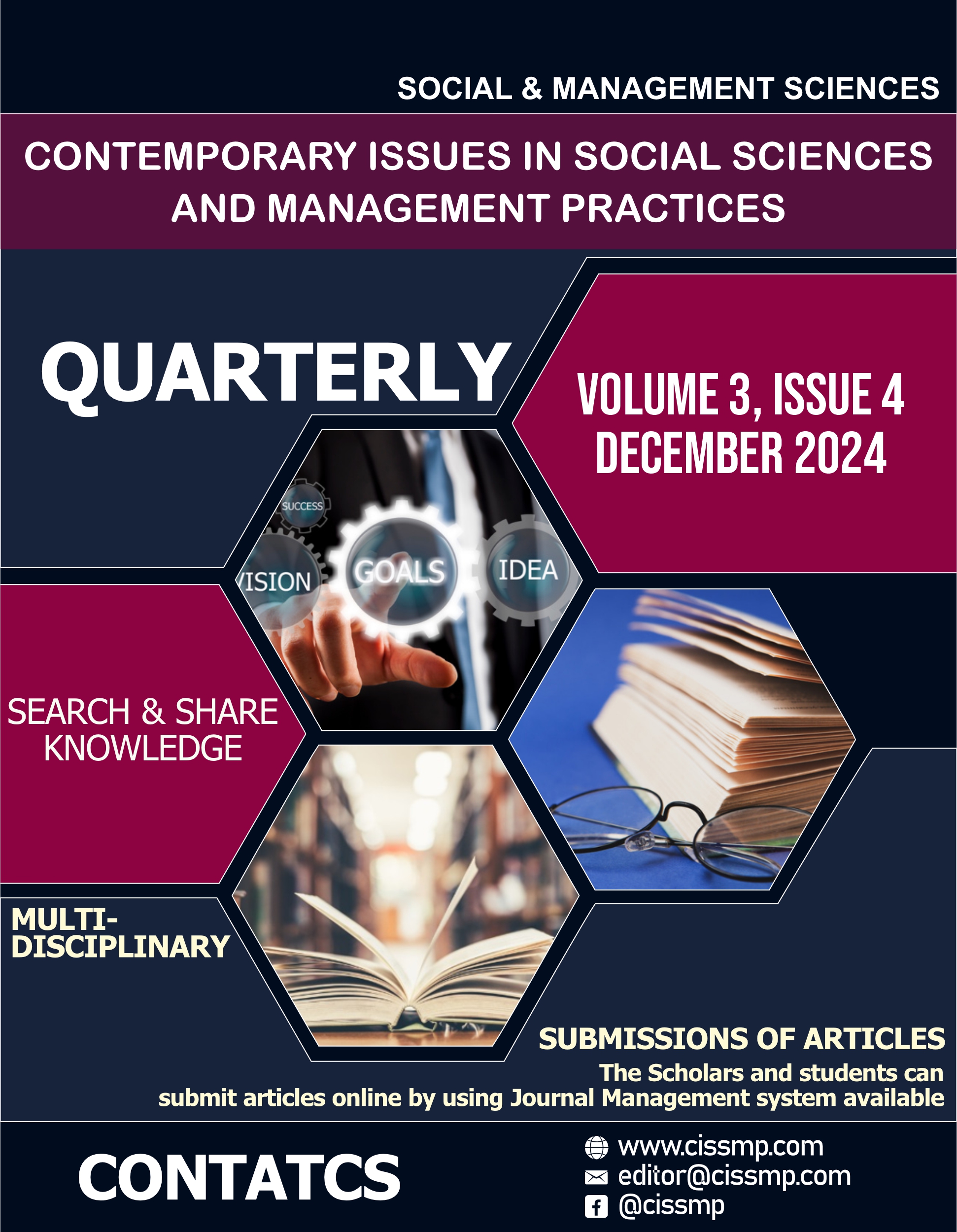Poverty and Gender Inequality in Rural Livelihood Evidence and Policy Option
DOI:
https://doi.org/10.61503/cissmp.3.4.2024.272Keywords:
Rural Areas, Poverty, Livelihood, Policy, GenderAbstract
This study was designed to examine poverty and gender inequality in rural livelihoods, focusing on evidence and policy options. The main objectives were to assess the impact of socioeconomic status on poverty and gender inequality, evaluate the effectiveness of gender inequality interventions for income generation and poverty alleviation in rural areas, and provide recommendations to address these issues. A quantitative research approach was adopted, and the study was conducted in Faisalabad district using a multistage sampling technique. In the first stage, Faisalabad district was selected through simple random sampling. Four peri-urban communities Samundari Road, Jaranwala Road, Shaikhupura Road, and Sargodha Road—were then chosen. A systematic sampling technique was applied to select 30 respondents from each area, resulting in a total sample size of 120. Data were collected through face-to-face surveys using a structured interview schedule, developed in alignment with the research objectives. Univariate and bivariate analysis techniques, including the chi-square test and gamma test, were employed for data analysis. The findings revealed a significant association between respondents' education levels and their perceptions of poverty and gender inequality in rural livelihoods, highlighting critical areas for policy intervention.
Downloads
Downloads
Published
Issue
Section
License
Copyright (c) 2024 Sonia, Saira Abrar , Muhammad Ayub

This work is licensed under a Creative Commons Attribution-NonCommercial 4.0 International License.
Contemporary Issues in Social Sciences and Management Practices (CISSMP) licenses published works under a Creative Commons Attribution-NonCommercial (CC BY-NC) 4.0 license.









